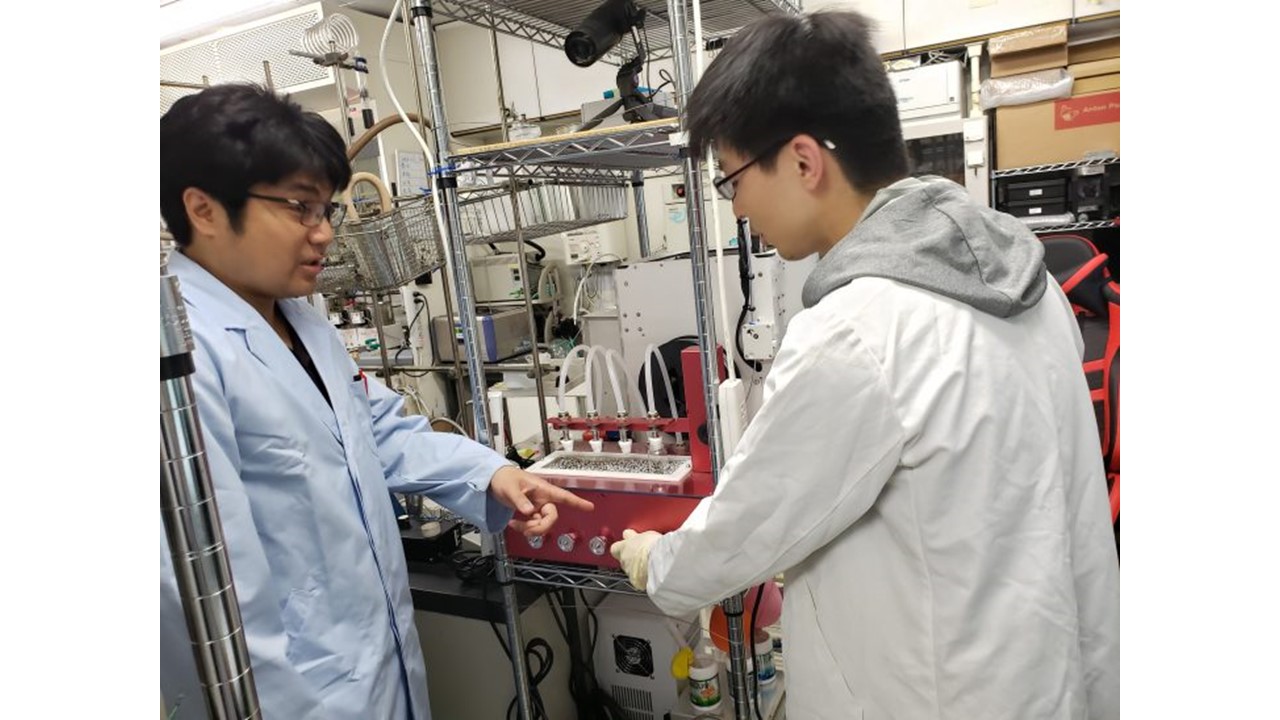We're using Smart Evaporator and rotary evaporator together in the work of phospholipid synthesis

In this issue, we interviewed Dr. Satoshi Honda, who is using a Smart Evaporator four-channel model for his research on phospholipid synthesis.
Interviewee:
Dr. Satoshi Honda, Assistant Professor, Department of Basic Science, Graduate School of Arts and Sciences, The University of Tokyo, Komaba
┃Dr. Honda's research content
My research theme is on the construction of molecular assemblies by amphiphilic molecules.
┃What a Smart Evaporator four-channel model is used
We are using it to concentrate the solutions obtained in the synthesis process. Related to synthesis, we are conducting the researches on making the new monomers for polymer synthesis, synthesizing new polymers using those monomers, and synthesizing the amphiphilic polymers including such new polymers, and manipulating the shape of the single polymer molecule. As all of these experiments are the synthesis of new organic polymers, so the raw materials are reacted in a flask and purified after the reaction is complete. Some of purification operations involve concentration, so the Smart Evaporator comes into play in such cases.
┃Experimental conditions such as container and volume
- Advantages
We use a Smart Evaporator in the process of separating and purifying sample solutions, concentrating samples with a large amount of solvent in screw tubes , and storing samples in vials. A variety of residual solvents such as CPME and dichloromethane are removed. A 50ml screw tube containing 5ml to 30ml of sample solution is operated for concentration at 40℃ setting. Since the complete removal of residual solvent is required in the experimental process, we use rotary evaporator, Smart Evaporator, and vacuum pump together.
- Frequency of use
We use it every day. I think it runs for about an hour at a time.
┃Thoughts on the actual uses
- Advantages
As it can process four samples at once, which led to improved efficiency. As comparing to a regular rotary evaporator, Smart Evaporator is less prone to cause sudden boiling so we can leave the scene, and also, we can reduce sample loss (because there is no need to transfer the sample to another container). Also, when we try to remove the solvent from a solution containing amphiphilic molecules, it often bubbles up, and the Smart Evaporator is useful in such cases. Another good thing about Smart Evaporator is that it saves space for operating solvent removal operation. It happened to fit nicely just into the rack in our lab.
- Improvement wishes and requests
I am concerned about the vibration during use. When Smart Evaporator is running, it would be better if the vibration of the vacuum pump could be suppressed, since the vibration affects the rheometer measurement (as noise is produced by the pump). Also, when I was considering installing the Smart Evaporator, I was comparing it to the two-channel mini evaporator. I ended up buying both because Smart Evaporator cannot be used for experiments which I had to worry about oxidation reactions. (*If you are concerned about vibration, for the first it is best to put the vacuum pump on the floor, or have it vibration-proofed. It might cost a lot if you want to take firm measures. There are many anti-vibration goods available at 100-yen stores, so you may try them first.)
Summary
Dr. Honda, who we interviewed this time, is working on his research theme on the creation of organic and polymeric soft materials that mimic the structure of biomolecules. He is working on the preparation of GV from phospholipids, the synthesis of specially structured polymers, the construction of functional nanostructures, and the development of stimuli-responsive materials. So far, rotary evaporators and oil-sealed rotary vacuum pumps have been used for the experiments. With the introduction of the Smart Evaporator four-channel model, now he is able to remove solvent from samples that are prone to sudden boiling without the risk of sudden boiling, and now he is able to process multiple samples at once; which is a good example of an improvement of efficiency.
(Reporting by Watanabe, Otake and Yokosawa)
■Interested in what Smart Evaporator is? You can learn from here!
■Product details of Smart Evaporator K4 (Open Type 4 Channel Evaporator)
